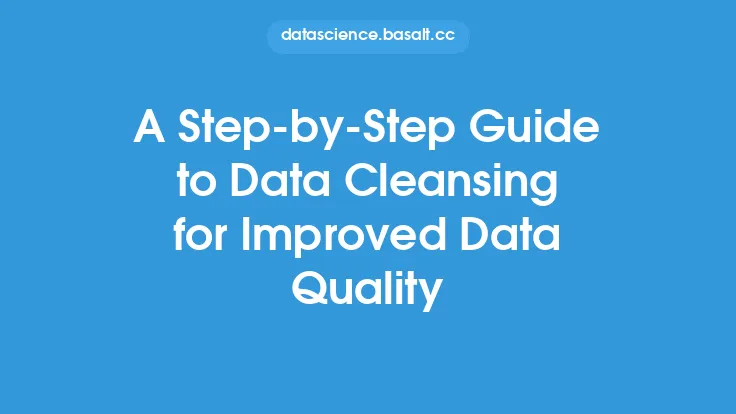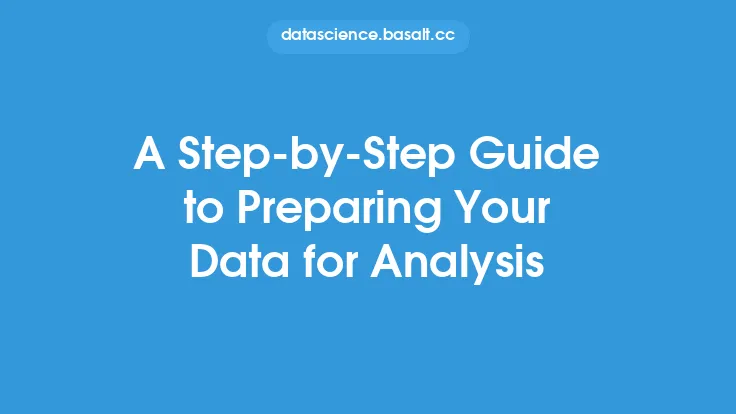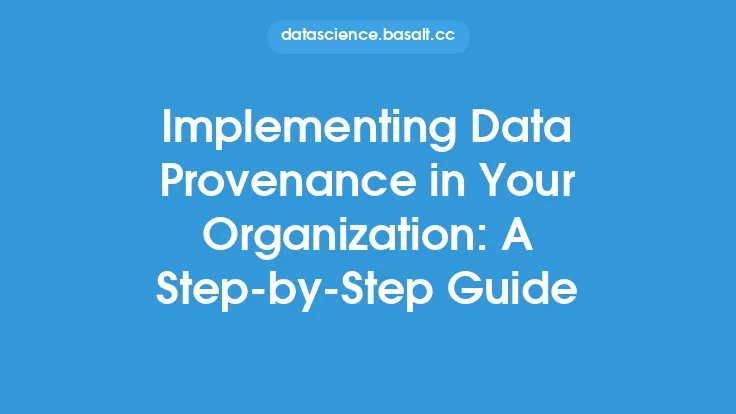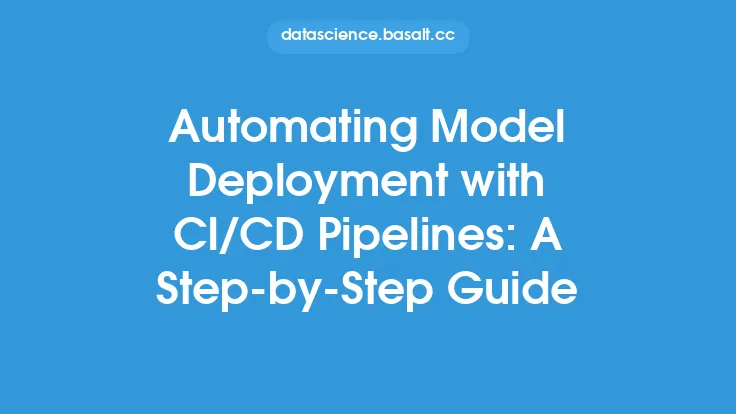Data preprocessing is a crucial step in the data mining process, as it prepares the data for analysis and modeling. The goal of data preprocessing is to transform the raw data into a clean, consistent, and reliable format that can be used to extract insights and knowledge. In this article, we will provide a step-by-step guide to data preprocessing, covering the key steps and techniques involved in this process.
Introduction to Data Preprocessing Steps
The data preprocessing process typically involves several steps, including data collection, data inspection, data cleaning, data transformation, and data reduction. Each of these steps is critical to ensuring that the data is accurate, complete, and consistent. The first step in data preprocessing is data collection, which involves gathering data from various sources, such as databases, files, or online sources. Once the data is collected, it is inspected for quality and consistency, and any errors or inconsistencies are identified and corrected.
Data Inspection and Cleaning
Data inspection and cleaning are critical steps in the data preprocessing process. During data inspection, the data is examined for errors, inconsistencies, and missing values. This step helps to identify any issues with the data that need to be addressed before it can be used for analysis. Data cleaning involves correcting or removing errors and inconsistencies in the data, as well as handling missing values. There are several techniques that can be used for data cleaning, including data imputation, data transformation, and data normalization.
Data Transformation
Data transformation is the process of converting data from one format to another. This step is necessary to ensure that the data is in a format that can be used for analysis. There are several types of data transformation, including aggregation, grouping, and pivoting. Aggregation involves combining multiple values into a single value, such as calculating the mean or sum of a set of values. Grouping involves dividing the data into groups based on one or more variables, such as age or location. Pivoting involves rotating the data from a row-based format to a column-based format, or vice versa.
Data Reduction
Data reduction is the process of reducing the size of the data while preserving its integrity. This step is necessary to reduce the computational resources required for analysis and to improve the accuracy of the results. There are several techniques that can be used for data reduction, including data aggregation, data sampling, and data dimensionality reduction. Data aggregation involves combining multiple values into a single value, such as calculating the mean or sum of a set of values. Data sampling involves selecting a subset of the data for analysis, rather than using the entire dataset. Data dimensionality reduction involves reducing the number of variables or features in the data, while preserving the most important information.
Handling Outliers and Noisy Data
Outliers and noisy data can have a significant impact on the accuracy of the results, and must be handled carefully. Outliers are values that are significantly different from the other values in the data, and can be caused by errors in data collection or measurement. Noisy data is data that contains random variations or errors, and can be caused by a variety of factors, including instrument error or sampling variability. There are several techniques that can be used to handle outliers and noisy data, including data trimming, data winsorization, and data smoothing. Data trimming involves removing a portion of the data at the extremes, such as the top and bottom 10%. Data winsorization involves replacing a portion of the data at the extremes with a value that is closer to the median. Data smoothing involves using a mathematical function to reduce the noise in the data.
Data Preprocessing Techniques
There are several data preprocessing techniques that can be used to prepare the data for analysis. These techniques include data normalization, data feature scaling, and data encoding. Data normalization involves scaling the data to a common range, such as 0 to 1, to prevent differences in scale from affecting the results. Data feature scaling involves scaling the data to have zero mean and unit variance, to prevent differences in scale from affecting the results. Data encoding involves converting categorical variables into numerical variables, such as using one-hot encoding or label encoding.
Tools and Software for Data Preprocessing
There are several tools and software that can be used for data preprocessing, including programming languages such as Python and R, and software packages such as Pandas and NumPy. These tools and software provide a range of functions and methods for data preprocessing, including data cleaning, data transformation, and data reduction. They also provide a range of data structures and algorithms for efficient data processing and analysis.
Best Practices for Data Preprocessing
There are several best practices that should be followed when performing data preprocessing. These best practices include documenting the data preprocessing steps, using data validation and data verification techniques, and testing the data preprocessing pipeline. Documenting the data preprocessing steps helps to ensure that the data is reproducible and can be easily understood by others. Using data validation and data verification techniques helps to ensure that the data is accurate and consistent. Testing the data preprocessing pipeline helps to ensure that the data is correctly formatted and can be used for analysis.
Conclusion
In conclusion, data preprocessing is a critical step in the data mining process, and involves several key steps and techniques. By following the steps and techniques outlined in this article, data analysts and scientists can ensure that their data is accurate, complete, and consistent, and can be used to extract insights and knowledge. Whether you are working with small or large datasets, data preprocessing is an essential step that can help to improve the accuracy and reliability of your results. By using the tools and software available, and following best practices, you can ensure that your data is properly preprocessed and ready for analysis.





